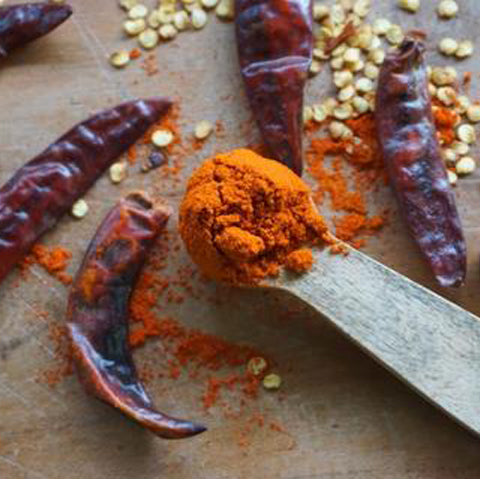Have you often wondered if your black pepper isn’t quite as sharp as it used to be? Or if your Kheer isn’t as fragrant as you’d expect it to be despite adding a whole teaspoonful of freshly ground cardamom? Chances are, you are using adulterated spices.
Adulterated spices are not very different in appearance as compared to a batch of unadulterated spices.
This makes it difficult for us consumers to make an informed decision when purchasing the spices.
Large food manufacturers use sophisticated technology that can compare the smells and tastes of various samples to detect possible adulteration.
When buying spices loose, however, the possibility of adulteration is much higher.
Thankfully, there are a few easy tricks that we can try at home to check if the spices we’ve just bought are safe for consumption or not.
These are a few broad tips to keep in mind when buying your kitchen staples:
- Avoid loose, unbranded groceries, be it spices, or attas, or pulses. Loose foods have the highest probability of adulteration.
- Check for an FSSAI license. If a brand carries an FSSAI license, it means they are following basic food safety protocols as directed by the Government.
- Look for logos and certifications on the product packaging. If buying organic, check for an organic certification body. For instance, all organic Conscious Food products carry an ECOCERT and NPOP logo at the back of the pack.
- Read your ingredients. It will surprise you how many chemicals and stabilisers are added in packaged foods. An ingredient list check is a simple and easy way to prevent yourself from consuming these additives.
Here are a few handy tips to detect adulteration in spices:
Cardamom

This is a tough one. Green cardamom pods are often adulterated with “used” cardamom pods, or ones from which volatile oils have already been extracted.
When you buy green cardamom, look for pods that are appear plump and feel full to touch.
Used pods will have a shrunken appearance and feel emptier. In terms of color, unadulterated pods have a mellow yet fresh green color while adulterated ones are either pale or have been colored an unnatural green using a dye.
Red Chilli Powder

A common adulterant in red chilli powder as well as several other powdered spices is sawdust.
Would you ever imagine that somebody could go to great lengths to dye sawdust the color of the spice powder it is added to and still find it more profitable than selling pure spices?
The next time you find your chili powder looking particularly vibrant, just add a spoonful to a glass of water and let it sit for 5 minutes.
If the powder leaves a trail of red as it settles to the bottom, chances are the spice has been colored artificially.
If it is pure, the water on top will be relatively clear once the powder settles.
Turmeric Powder

For turmeric powder/haldi – add a teaspoon of it to a glass of water. Do not stir it and let it sit for 10 minutes.
If the powder settles down with relatively clear water above, the turmeric powder is considered pure.
Turmeric powder is often adulterated with chalk powder, metanil yellow or lead chromate.
Asafoetida/Hing

Asafoetida/Hing is often adulterated with soapstone. To detect this, take a pinch of hing in a glass of water and allow it to settle for 5 minutes. The impurities will settle at the bottom of the glass.
Shop Now -
Cardamom - https://www.consciousfood.com/products/cardamom-elaichi
Red Chilli Powder - https://www.consciousfood.com/products/red-chilli-powder
Turmeric Powder - https://www.consciousfood.com/products/turmeric-powder
Asafoetida/Hing - https://www.consciousfood.com/products/asafoetida-hing






